The Mudéjar artistic style originated in the 12th century and remained fashionable until the 17th century.
The word "Mudéjar" is derived from the Arabic language, which means "one who remained" in Spain.
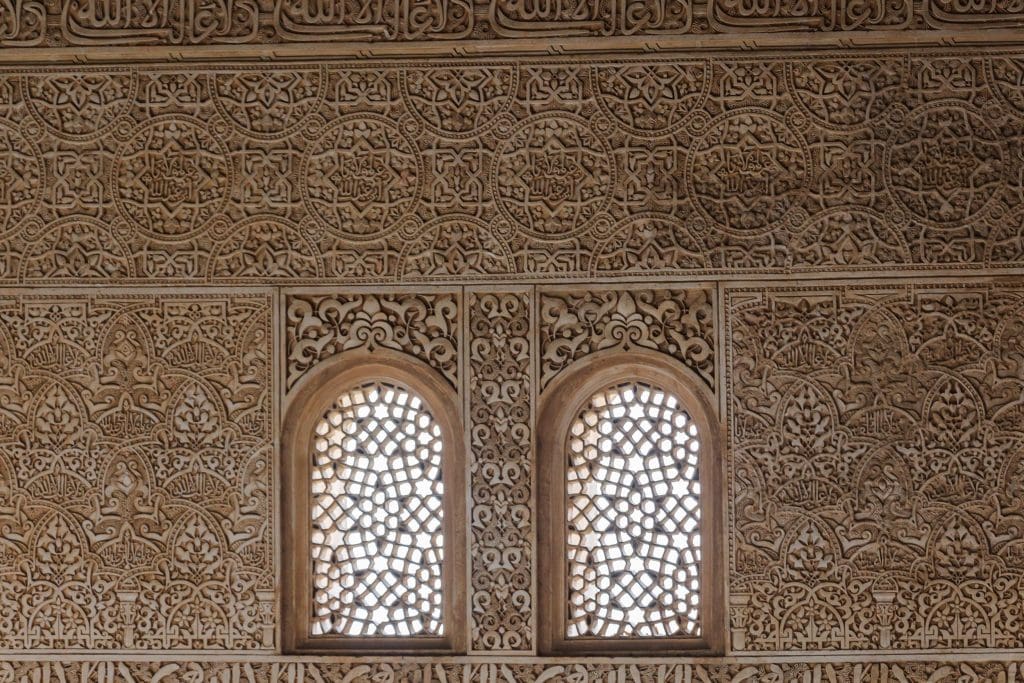
The Mudéjar style originated during the Reconquista, when Muslim residents of Spain, called Mudéjares, voluntarily agreed to convert to Christianity and serve the Crown loyally.
The style was expressed primarily in architecture, sculpture, ceramics, and textiles, and it combined elements of Islamic and Christian art, primarily Romanesque and Gothic.
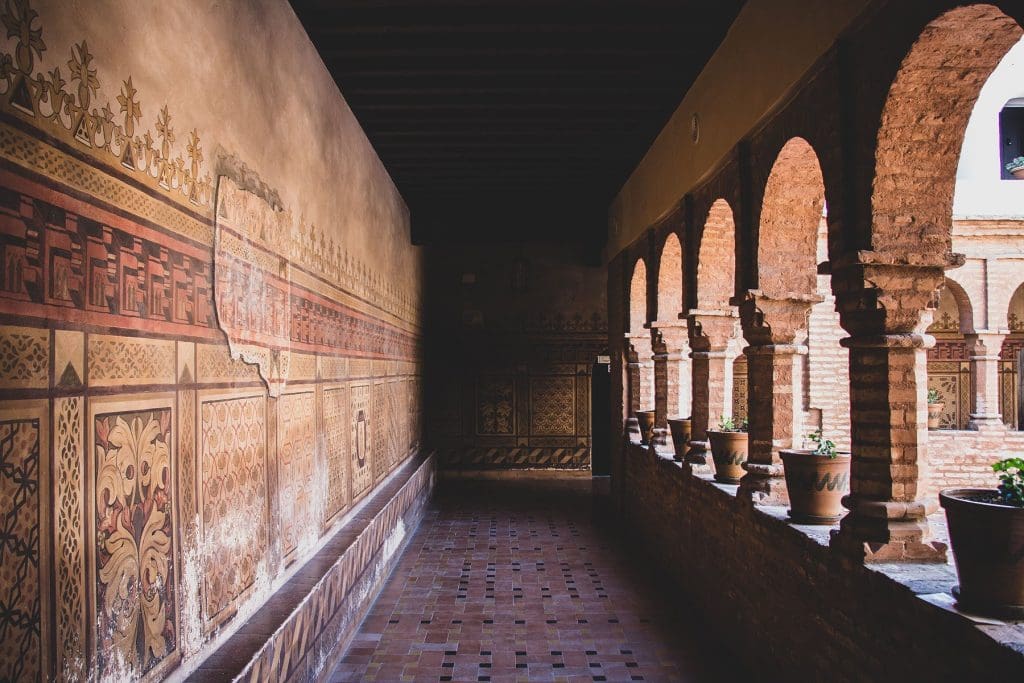
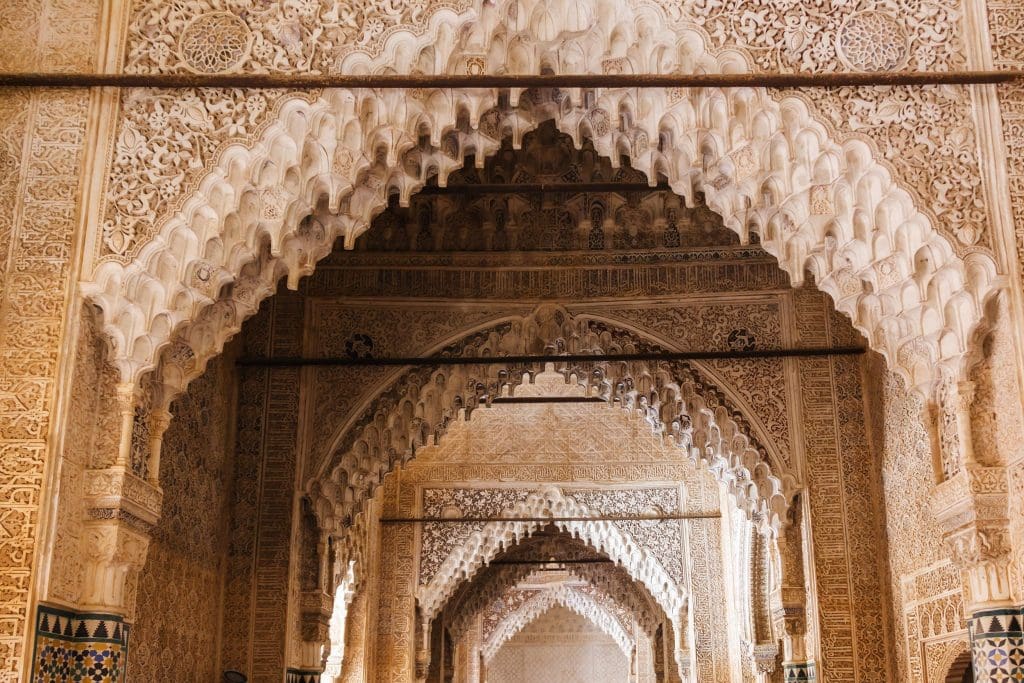
The style reached its peak of popularity during the Gothic period (15th–16th centuries), when characteristic, intricately crafted ornamental decorations, made of stucco, wood, or brick, were used to cover surfaces in such a way that the walls resembled embroidered or intricately woven draperies.
The work of Muslim craftsmen was quickly appreciated by social elites, kings, nobles, and church authorities, who began commissioning the creation of residences, religious buildings, and important utilitarian buildings in the Mudéjar style.
The style was also characterized by the use of arches, which are typical of Moorish architecture.
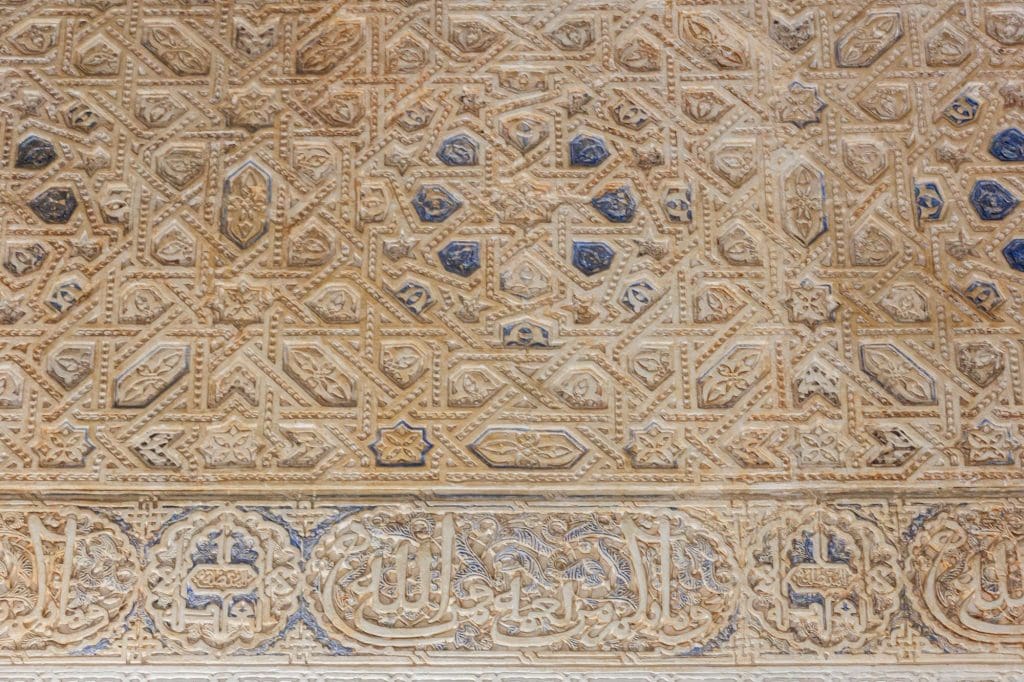
Andalusia is full of monuments built in the mudejar style, and so we can marvel at its heritage in the various provinces:
Province of Almeria
- Iglesia de Nuestra Señora de la Anunciación – Huécija
Province of Cadiz
- La Iglesia de San Dionisio – Jerez de la Frontera
- El castillo de Torrestrella – Medina-Sidonia
Province of Cordoba
- La puerta del Perdón
- La capilla Real de la Mezquita
- La Casa de las Campanas
- La Casa de los Caballeros
- La iglesia de San Miguel
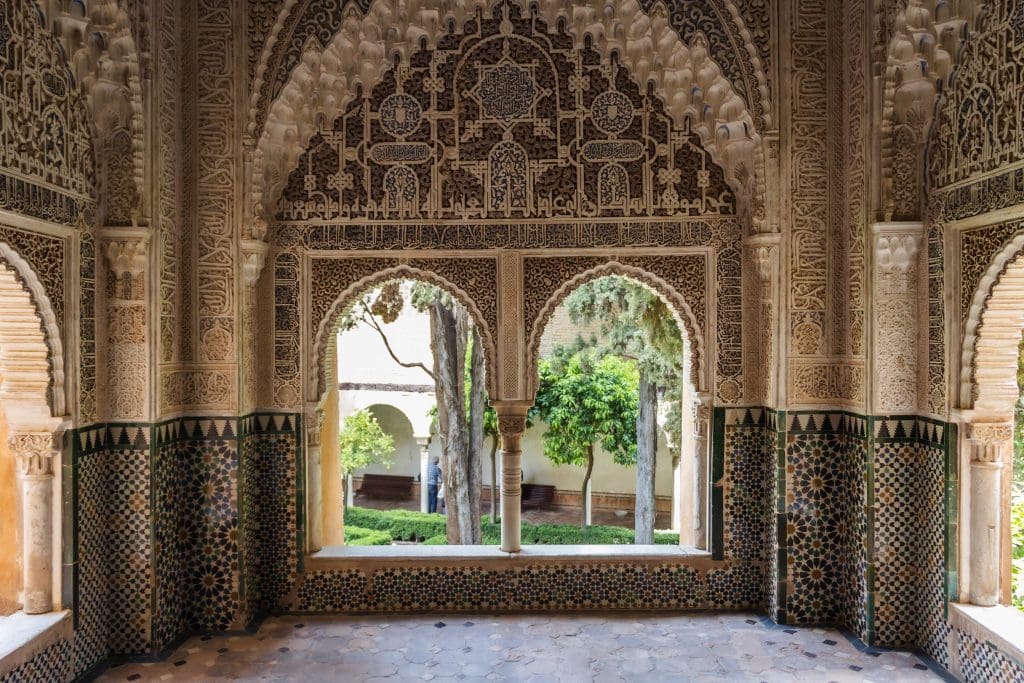
Province of Granada
- La Iglesia de San José
- La Iglesia del Convento de Santa Isabel La Real
- El Sagrario del Convento de Santa Isabel la Real
- El Minarete junto a la Iglesia de San José
- La Iglesia de San Pedro y San Pablo
- La Iglesia de Santa Ana
- El Palacio de la Madraza
- La Iglesia de San Bartolomé
- La Iglesia del Salvador
- La Iglesia de San Nicolás
Province of Huelva
- En Aracena, Iglesia de Nuestra Señora de los Dolores – Aracena
- El Monasterio de Santa Clara – Moguer
- El Monasterio de La Rábida – Palos de la Frontera
Province of Jaen
- La Iglesia de San Bartolomé, iglesia de la Magdalena – Jaén
- La Iglesia de San Andrés – Jaén
- Palacio del Condestable Iranzo – Jaén
- El Convento de Santa Clara – Úbeda
- La Puerta del Losal – Úbeda
- La Casa Mudéjar – Úbeda
Province of Malaga
- El convento de la Trinidad – Malaga
- La Iglesia de Santiago – Malaga
- Árchez i duża część La Axarquia (historycznego regionu Andaluzji)
Province of Sevilla
- Palacio Alcázar – Sevilla
- La Casa de Pilatos – Sevilla
- La Casa Olea y las iglesias de Iglesia de San Julián – Sevilla
- Iglesia de Santa Marina – Sevilla
- Iglesia de San Marcos – Sevilla
- Iglesia de Santa CatalinaIglesia de San Andrés – Sevilla
- Iglesia de San Esteban – Sevilla
- Iglesia de San Isidoro – Sevilla
- Iglesia de San Pedro – Sevilla
- Iglesia de San Martín – Sevilla
- Iglesia de San Lorenzo – Sevilla
- Iglesia de Omnium Sanctorum – Sevilla
- Iglesia de San Sebastián – Sevilla
- Iglesia de San Vicente – Sevilla
- Iglesia de Santa Ana – Sevilla
- Iglesia de San Juan de la Palma – Sevilla
- Iglesia de San Román – Sevilla
- Iglesia de San Gil e Iglesia de Santa Lucía – Sevilla
- Nuestra Señora de la Oliva – Lebrija
- La iglesia de Santa María de la Asunción – Mairena del Alcor
- La ermita de San Sebastián y el castillo de Luna – Mairena del Alcor
- La Mayor, la Iglesia de San Pedro – Sanlúca
- El Monasterio de San Isidoro del Campo – Santiponce
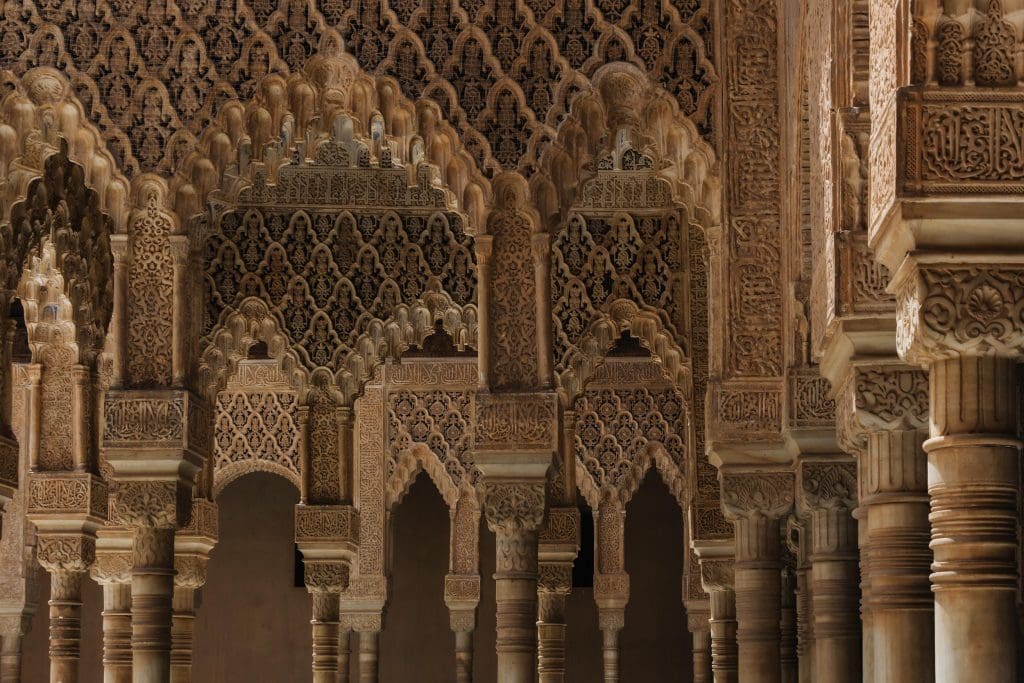
When visiting Andalusia, be sure to take note of its fairy-tale architecture.
Mudejar is not just visual art, it is also music. Javier Mas and Luis Delegado are two of its most accomplished performers, and thanks to them, we can still hear the music of centuries past and experience this unique and exotic style in the 21st century.
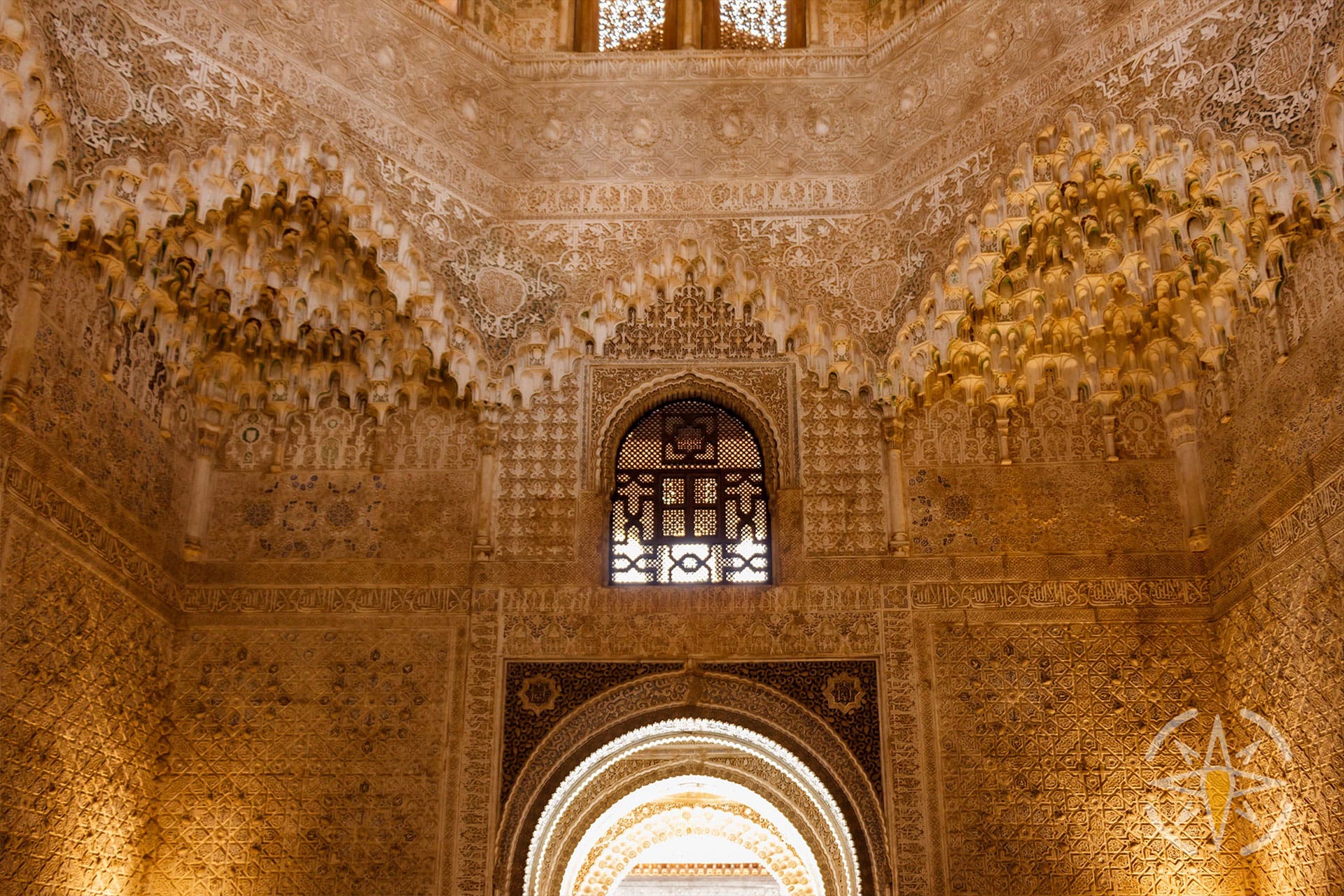
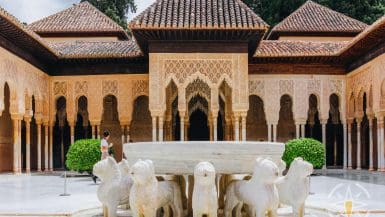
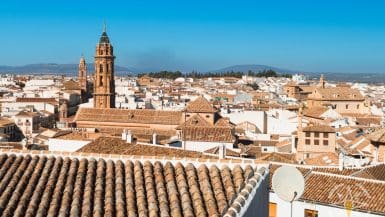
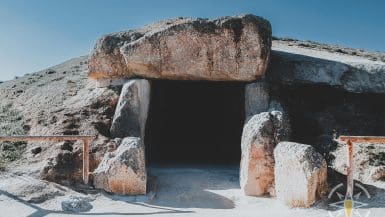
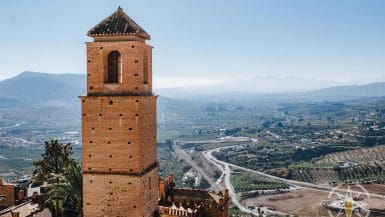
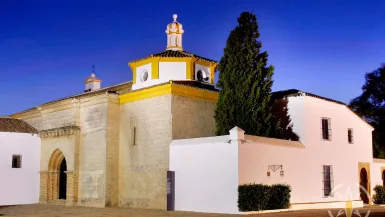

Leave a comment, ask a question...